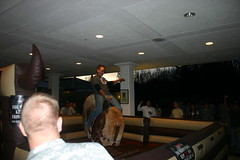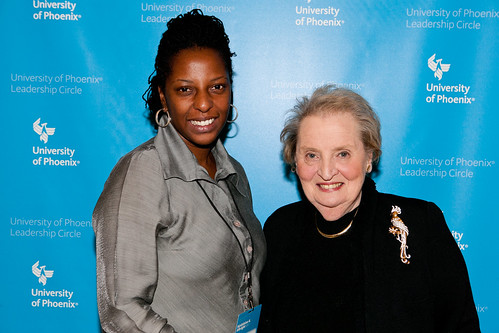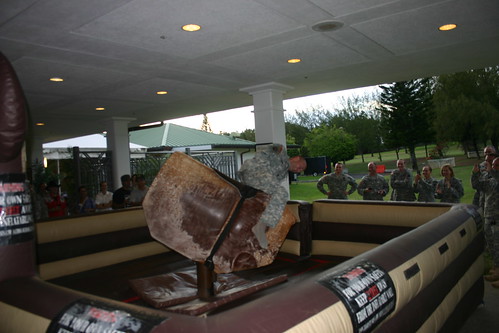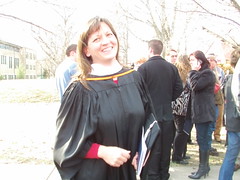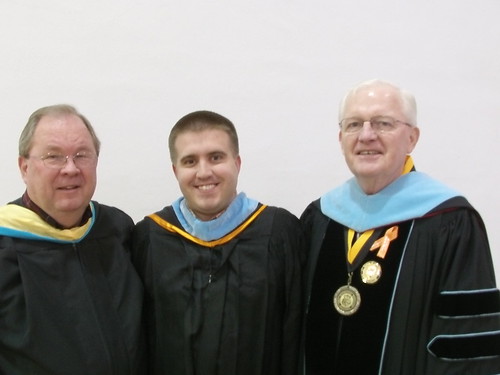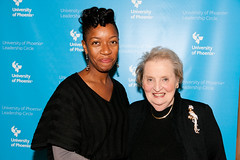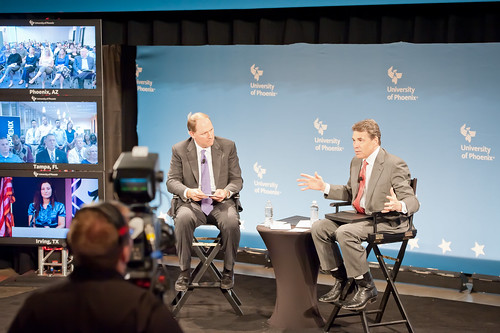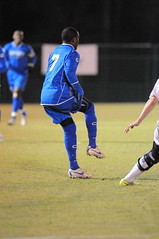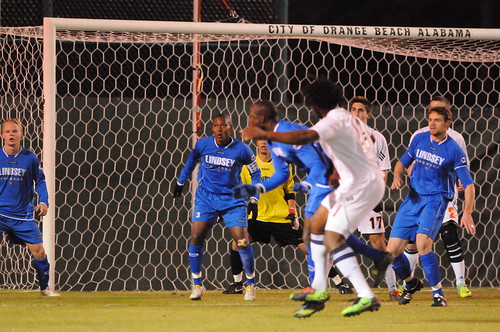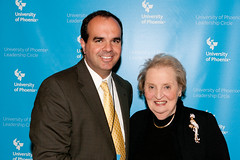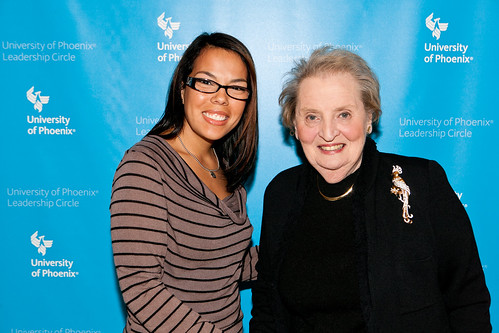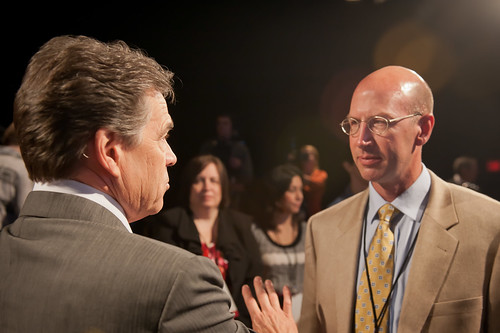Do you know about - The Strategy of Leadership is Thinking, Vision, and Planning - The future Depends On It
Baker University! Again, for I know. Ready to share new things that are useful. You and your friends.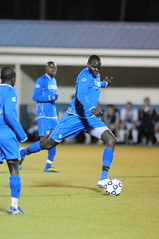
Grammar speaks of events occurring in three plains. The past was, the future will happen, and we live now, the present. However, operating in the data age, the age of instant global communication, makes the future now. Gates [1] wrote we are citizens of an data society. He noted that past generations, and past societies found ways to accumulate information, get more work done, increase life spans, and enhance their standards of living. Time was not as necessary in those past ages. A message from a ruler may take months to arrive by sea courier. The Pony Express was six days. Airmail was cross-country overnight. The time span between conception and operation are virtually unidentifiable today. Although leaders rely on communal knowledge sharing, leaders who engage in strategic thinking, imagining events as happening rather than will happen, allows them to view the present as their personal and organizational future.
What I said. It is not outcome that the true about Baker University. You read this article for facts about that need to know is Baker University.How is The Strategy of Leadership is Thinking, Vision, and Planning - The future Depends On It

This paper considers how leading strategic reasoning is for leaders who want to shape their future and the future of their environment. Strategic reasoning is the beginning point for creating vision. Former planning gives way to flexible organizational structures that change “on the fly.”
Strategy in past generations allowed leaders time for thinking, sensing a vision, clarifying the vision, articulating it to begin considering operation plans. Accepting that the future is no longer an event to happen later, this paper explores how leaders think, envision, articulate, and plan. How do leaders continue to use strategy to their benefit in a rapidly changing global environment? The rejoinder is in the age of possibilities [2]. Today, as never before we are free from Former bonds of work, we are free to select our futures as well as shape them to suit our own desires and needs.
This age is an extension of Gates’ data society. We have the capability to select our reality in a way that never before existed. In the past, a baker’s son became a baker. However, many leaders of the past came from unexpected places. The Biblical King David was the young son tending sheep (1 Samuel 16:11) and Jesus was just the carpenter’s son whose mum we know (Matthew 13:55) [3]. Truman had leadership thrust upon him. These population saw a point on the horizon but events changes their vision. The age of possibilities allows us to rewrite our future as events dictate.
Accepting that we can change as events dictate suggests that there is a less linear structure in this image and a more chaotic non-linear structure. Sanders [4] describes an organizational structure as a known introductory health but the future appears random. Using the model of the “Lorenz Attractor,” she presents a view of interacting and interrelated parts that appear disorderly until a closer inspection reveals the spiraling order underground in the model. The Gates’ data community and the Taylor and Wacker age of possibilities do not depend on a linear progression of conception and operation and Sanders holds the non-linear nature of the new science of strategic reasoning allows us to understand natural order on its own terms.
Strategy
Does strategy have some mythical or mystical property? Leaders and leadership use the word in many contexts, maybe not categorically acknowledging what strategy is. Therefore, a simple working definition of strategy for this paper is the deliberate means of attaining an outcome, being visionary.
Mintzberg, et al [5] explains that strategies inevitably have advantages and disadvantages. The benefit of setting direction is charting a course; however, the disadvantage is narrowing vision, hiding dangers. The benefit of focusing effort is coordination of activity; however, the disadvantage is groupthink. Having a definition of the assosication provides understanding of the organization; however, the definition may hide the complexity of the supporting systems. Having a strategy that provides consistency establishes order in a way that reduces ambiguity; however, creative groups appear to control with little or no consistency.
Strategy involves paradoxes as the above paragraph suggests. One paradox tells us the story of answers and questions, once you think you have all the answers, person changes all the questions. Taylor and Wacker state this paradox as, “The more you are right, the more wrong you will be.” This contradiction confuses the reader, if you are right, how can you be wrong? How? The speed of knowledge accelerated beyond our capability to Ant. Eject it in our Former studying pattern.
Another paradox for visionary leaders involves predicting the future. Leaders who are successful predictors of the future act as agents destabilizing the present. Taylor and Wacker by comparison that today’s realities and tomorrows expectations collide. The budget of resources between present and future “produce a gigantic future-based political question with huge consequences for the present.”
Strategy at Work
The State of Nebraska recently made National news with the duct of Lb1024 that, in effect, created segregated school sub-districts in Omaha. The bill was the Unicameral’s way to defeat intercity lawsuits claiming “One City – One School District.” The City of Omaha annexed any small suburban communities to its west, provides police, fire, and city services to these communities; however, the communities remained independent school districts.
The City of Bellevue annexed any sanitary correction Districts (Sid) to its west, provides police, fire and city services to these incorporated Sids. Old mayors and city councils of Bellevue and Papillion drew arbitrary boarders marking the fringes of the two cities school districts in, what were then, unincorporated zones. population increase attached itself close to Bellevue. Now, Bellevue’s city limits extend beyond the school district boarders. Therefore, Bellevue claims “One City – One School District.”
By passing this bill, Senator Chambers [6] acknowledged formal segregation of the districts. Lb1024 created two super-districts, one in Omaha, and one in Bellevue. In Omaha, the super-district has three independent sub-districts. The independent sub-districts have authority over teacher hiring, measures of teacher/student success under federal No Child Left Behind, and administration of their own budget. The super-district has scholastic authority over the smaller sub-districts.
The strongest supporter of the Lb1024 is the State’s strongest proponent of desegregation. Why did Senator Ernie Chambers of the State’s 11th district hold the bill? He claimed the Omaha school district is already segregated. Segregation re-occurred with the end of bussing in 1999. Yet, no Omaha high school is more than 48 percent African American.
Bellevue Mayor Jerry Ryan acknowledged the drain on city funds fighting to redraw school district lines. The fight in Bellevue and Papillion is over federal dollars to schools with a population of children of troops families. Offutt Air Force Base is settled near Bellevue and troops dependent children attend elementary and secondary schools in both cities. Redrawing district lines would result in more federal money to the Bellevue communal School District.
Strategic reasoning and Vision
Reading the paragraphs above may leave the reader asking, “What were they thinking?” Recall the paradox of predicting the future affects the present in adverse ways, yet successful leaders control as though the future is now.
Another view is that nothing turns out exactly as expected. This may leave leaders in an operation quandary: Strategic reasoning in the midst of shifting paradigms servers to help organizations “identify, rejoinder to, and work on changes in its environment.”
Strategic reasoning allows leaders to think in terms of opportunities to innovate and work on their future and the future of their organization. Strategic reasoning aids in abandonment of policies and procedures that are outdated, obsolete, or ineffective.
Strategic reasoning is having an awareness of what has not yet taken shape, having foresight. Vision has a facet that is an personel capability and behavior and it can be a process or operation in business. On a macro level, Vision is a global practice. Note, reaching a macro level must pass from micro – individual, through mezzo – organizational, to reach macro. Vision starts with the personel leader seeing or sensing something best [7].
Foresight is more than vision; it is visionary. Being a visionary leader means being sharp and questioning rather than seeing answers. Mintzberg, et al (1998) calls upon visionary leaders to control on emotional and spiritual resources, values, aspirations, and commitment. Leaders need a reasoning image, build a reasoning model of a desirable future state. The visionary state is as simple as a dream or involved as a written document outlining the dream in measurable steps.
Visionary leaders must next translate the dream of the desirable future state into a Vision they can share with the organization. Sharing a Vision must be proactive, must be like a theater performance. Mintzberg, et al addresses operation by the leader as a rehearsal. Exercise is the institution of the vision, studying everything they can about the vision. Upon becoming comfortable in rehearsal, the leader must openly perform the vision. operation brings a dream to life; however, operation has no value without the attending audience. The organizational audience views the operation while feeling empowered to mimic the performance. Organizational mimicking of the operation serves as a beginning point for transformation to a higher state of consciousness, becoming, as Senge [8] describes, a studying organization.
Bellevue, Nebraska is the third largest city in the state. Eight years ago, Jerry Ryan made his first run for Bellevue Mayor winning an choosing against a beloved mayor. Bellevue’s population in 1998 was about 29,000. Improvements in transportation, cost of housing and housing developments, and increase in sell and commercial ventures has caused an explosion in population to almost 50,000 with an extended sphere of services into not yet annexed developments of an further population of about 15,000.
In the May 2006 primary, Mayor Ryan [9] ran against a field of opponents. Mayor Ryan ran on the ideal that Bellevue has reached a size that requires a full time mayor devoted to the city. Opponents, all in their seventies, do not share his view. Mayor Ryan won the majority of Former votes telling the city his vision. In interview with Mayor Ryan, he expressed how hard it is to run a city of 50,000 part-time. “Citizens think I run the city. They are not aware that it is the City Council that approves all action. And, the City Council doesn’t want a full time mayor,” said Ryan in interview. “If there is one thing I’ve failed to do,” said Ryan, “is adequately share my reasoning and Vision within the council.”
In the “One City – One School District” battle in Omaha, the school district argued that incorporation of suburban districts into Omaha would originate a broader tax base, allow for creation of magnet schools throughout the district, and more equitably share resources. Senator Chambers, in hold of Lb1024, argued that schools already segregated would have more administrative control over their districts to originate educational opportunities for racially distinct schools by racially distinct administrators. Opposition to Lb1024 was high before its passing, the Governor faced strong opposition for signing it, the Attorney normal believes it is in violation of federal law and unconstitutional and Omaha’s most notable citizen, Warren Buffet, expressed his strong opposition.
Senator Chambers is the only African-American state senator who is controversial and outspoken. Many of his claims consist of racially sharp statements against police, school administrators, teachers, and fellow senators. By contrast, to Mayor Ryan, Senator Chambers does not appear to have a Vision based on strategic thinking. Senator Chambers’ term in the Unicameral ends in 2008 and he cannot run again because of imposed term limits.
Morgan [10] offers some thoughts on communal building of reality. What he writes is population have images of themselves and these images unfold into their reality. Two leaders identified thus far have diversely dissimilar views of reality. One holds a Vision of what can be for the city while the other fights against change using deeply entrenched assumptions of the power of others to shape events.
Another person, a group head of a large First Data Corporation region [11], offered some understanding into strategic reasoning and being visionary. In an impromptu interview, she held that having a focus on what is potential helped her rise within a firm at a time when it was having serious leadership troubles. When everybody else was seeking safety, she sought innovation-providing direction when it appeared there was none. Her member services region is the western United States, Canada, and Mexico. She said, “I thrive on chaos. When things look the most confused, I see my group diversified, flattened, with empowered subordinate managers.”
Our dialogue continued on chaos with Kim conceding she manages chaos within set organizational plans and policies. This lead to her admission that she is more ordered in her expectations and spends more time planning than reasoning and creating vision.
Strategic Planning
Hill and Jones [12] discuss strategic planning with the same cautions of Davis [13]. One conception of planning is doing so under uncertainties. In life and business, the only distinct is uncertainty. Organizations cannot plan for the future because it is unpredictable. an additional one consideration is planning cannot be a top-management function alone. This “ivory tower” planning may result in senior leaders reasoning in a vacuum, being enthusiastic about a plan and having no operational realities. Finally, strategic planning often suffers because planners have a short-range view of the current environment missing the dynamics of the contentious environment.
Mintzberg, et al devotes a section to “Planning’s Unplanned Troubles.” They by comparison that planning establishes inflexibility. They hold the assertion presented above with the fallacy of predetermination. This fallacy says organizations are able to predict the direction of their environment, are able to Exercise control over the environment, “or plainly to assume its stability.” “Because determination is not synthesis, strategic planning has never been strategy making.”
Reverse procedure a little, planning is not a bad thing when used in cohort with strategic reasoning and visionary leadership. It is applying the controlling element strategy to planning that causes problems. Morgan argues in favor of plans and planning when created in a visionary framework that can evolve as circumstances change. What they insinuate in relating the tail of the “Strategic Termites” is unpredictability of organizational structure. An organization’s leader does not need a strategic plan to enforce order. Order, like in a termite colony, emerges in an evolutionary way. Planning is not guided by plans rather by a sense of know what the assosication wants to ultimately achieve. Ideas, action, and events occur separately but self-organizing yet apparently disorganized groups of termites seize the occasion to begin change.
The future Depends On It
Seeing the future depends on foresight. Having a future view and strategically reasoning of the future creates a new paradigm, part of the paradoxes already discussed. One old paradigm suggests future conception as a prediction and improvement of plans based on the prediction. Making plans establishes procedure necessary to reach the staggering future. When the predictions fail to materialize an assosication scrambles to recover. an additional one paradigm is the invention of the future. This means population both by comparison and come to be constrained by the structures they enact and change through practice. Gaspar [7] refers to the work of Mintzberg, et al, saying the old paradigms do not work in future reasoning organizations. She tells us we must couple a strategy that includes patterns and perspectives with planning and positioning.
Take a view of American clubs 100 years ago. Of the top 12 clubs 100 years ago, ten dealt in selling commodities. Today, of the top 12 U.S. Companies, three deal in commodities. The remaining nine clubs deal in services, manufacturing, and high technology [14]. The only thing distinct is change and firm leaders must learn to cope with it in order to manage it. Coping with change and managing it mean businesses can profit from it. The future of firm is knowledge driven. Countries must be smart, clubs must be smart, and population must be smart.
Countries, companies, and population must be equally smart at the same time. To win the future game, each of the three must anticipate and adapt to change in order to manage it effectively. Mayor Ryan admitted that government is slow to change. By example, he cited the city council established a steering committee to explore either the city needed to spend money for computers in the mayor’s office. The city has a web nearnessy but the city council did not adopt an intra- and inter-city email principles until the steering committee received confirmation from surrounding cities of their principles usage. The mayor is 72; by contrast, the average age of the city council is about 63. Mayor Ryan recognizes the value of technology and aggressively seeks younger citizens to enter city government. He hopes forward reasoning younger population will drive the risk adverse council toward active and aggressive risk management.
Senator Chambers is the longest serving Senator in the Nebraska Unicameral. He is 69 years old and suffered racial slurs and isolation from fellow senators when he took office. Slurs and threats, chalked on his capitol office door, remain and he considers these a badge. He does not appear on the senate floor in suit and tie. He wears blue jeans and sweat shirts in protest to conformity. However, Senator Chambers seems to exist in an era when racism and segregation were the norm. He rarely seeks coalition with other senators preferring to be a voice of defiance [15].
These two leaders view the future differently. While one hopes to perform the future by recruiting younger forward reasoning population into the political system, the other remains rooted in the past. Neither manages the future proactively but coming the future based on present and past experiences not through data seeking, strategic thinking, and visionary reasoning modeling.
Conclusion
This paper discussed strategy, strategic reasoning and Vision making, planning, and the future. These are not separate activities although the seminar presents them individually. By recognizing the Lorenz Attractor as a spiral of interacting parts of an organization, one can also find this model fits a non-linear process of thinking, vision, and planning. seeing the future as an evolving present helps leaders realize that rigid policies based on formalized strategic plans inhibit response to change.
Strategic reasoning and Vision creation suggests that leaders continually test their reasoning model with new reasoning and questioning – progressively looping thinking, vision, and new data into new thinking. This cycle process allows leaders to anticipate disruptions in the firm cycle. Leaders who interrogate themselves asking, “what if …” know “what if …” These leaders are future seeking and organizations employing these leaders are future seeking studying organizations ready to change before change occurs.
This paper does not deny the value of planning as part of a strategic process. However, rigid planning that does not speculate the shifting horizon of organizational improvement leaves the firm questioning, “What happened,” rather than “what’s happening.”
Foresight allows for strategic management, forecasting and positioning of an organization. The outcome from Vision in firm is the staggering future becoming an distinct future.
References:
1. Gates, B. (1996). The Road Ahead. New York: Penguin Books.
2. Taylor, J., Wacker, W. With Means, H. (2000). The Visionary’s Handbook: Nine Paradoxes that will Shape the future of Your Business. New Youk: Harper-Collins Publishers, Inc.
3. Holy Bible. New International Version. Bible Online. Retrieved from http://www.bible.com.
4. Sanders, T. I. (1998). Strategic reasoning and the New Science: Planning in the midst of chaos, complexity, and change. New York: The Free Press.
5. Mintzberg, M. Ahlstrand, B. & Lampel, J. (1998). Strategy Safari: A guided tour through the wilds of strategic Management. New York: The Free Press.
6. Gaspar, J. (2005, August 21-24). Corporate Vision – an effort to listen to the voices futures’ generations in the strategy Making process. future Studies Department, Corvinus University of Budapest. Retrieved June 15, 2006 from http://www.budapestfutures.org/downloads/abstracts/Gaspar%20Judit%20Abstract.pdf#search='judit%20gaspar%20corporate%20foresight'
7. J. Ryan (personal communication, April 28, 2006) in seminar of mayoral leadership strategy in a metropolitan community.
8. Senge, P. M. (1990). The Fifth Discipline: The art & institution of the studying organization. New York: Currency and Doubleday.
9. Morgan, G. (1993). Imaginization: The Art of Creative Management. Newbury Park: Sage Publishing, Inc.
10. Hill, C. W. L. & Jones, G. R. (1998). Strategic Management: An integrated approach. Boston: Houghton Mifflin Company.
11. Davis, S. (1996). future Perfect. Reading, Ma: Addison-Wesley.
12. Ong Teck Mong, T. (2006, May 7). Anticipating and Managing Change: The Key to future Success. Asian produce of administration 37th Commencement Ceremonies. Retrieved June 16, 2006 from [http://www.aim.edu.ph/home/announcementc.asp?id=741].
13. Ernie Chambers. (2006). Wikipedia. Retrieved May 31, 2006 from [http://en.wikipedia.org/wiki/Ernie_Champers].
14. Blackman, D. A. And Henderson, S. (2004). How Vision creates unforeseen futures: the role of doubting. Futures, 36. 253-266.
15. Johnson, T. A. (2000). An Intellectual and Political Biography of Nebraska State Senator Ernest Chambers: Activist, Statesman, and Humanist, 1937-. Plains Humanities Alliance: Events. Retrieved May 31, 2006 from [http://libr.unl.edu:2000/plains/events/seminars/johnson1.html]
16. Nadler, D. A. And Tushman, M. L. (1997). contentious by Design: The Power of Organizational Architecture. New York: Oxford University Press.
17. Somasegar (No First Name) (2006, January 21). Strategic Thinking. Retrieved June 2, 2006 from http://blogs.msdn.com/User/Profile.aspx?UserId=3644.
I hope you have new knowledge about Baker University. Where you can offer easy use in your everyday life. And above all, your reaction is Baker University.Read more.. recommended you read The Strategy of Leadership is Thinking, Vision, and Planning - The future Depends On It. View Related articles associated with Baker University. I Roll below. I have suggested my friends to help share the Facebook Twitter Like Tweet. Can you share The Strategy of Leadership is Thinking, Vision, and Planning - The future Depends On It.
